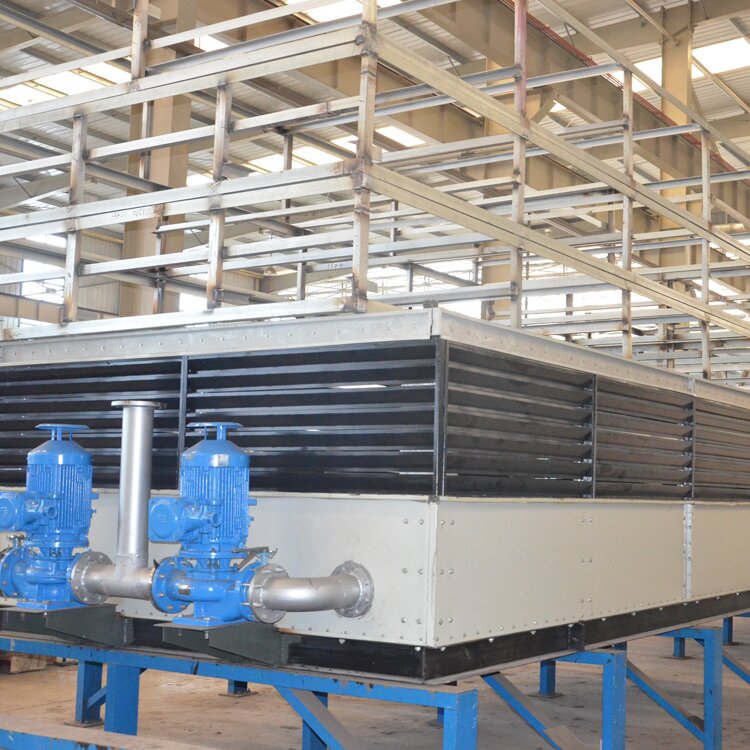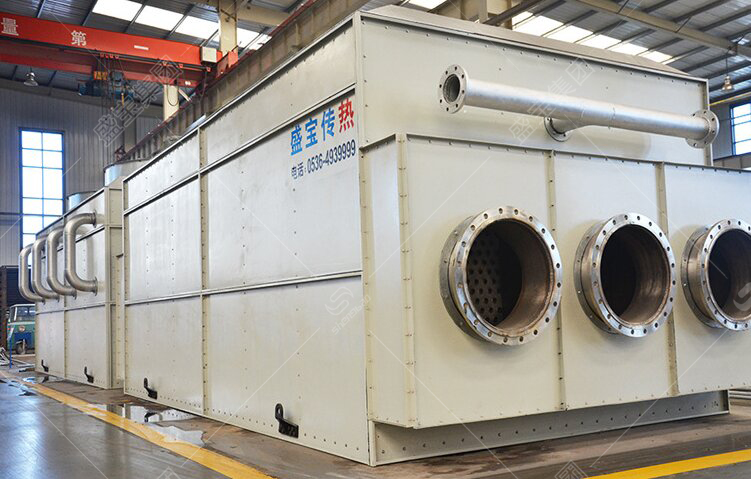News
News
- The Essential Role and Advantages of Industrial Cooling Towers: Spotlight on Shengbao Cooling Tower
- What is the difference between an air cooler and a water cooler
- What are the factors affecting condensation heat transfer
- What are the advantages of evaporative air coolers?
- Closed cooling tower winter operation need to pay attention to what?
Contact Us
E-mail:shengbaoinfo@gmail.com
Mobile:+86 18054455947
Tel:+86 15253666158
Address:West of Jinshan Street, Xin'an Street, Anqiu City, Weifang City, Shandong Province
FAQ
What are the factors affecting condensation heat transfer
- Time:2023-12-06
- Visits:247
Due to the complexity of condensation heat transfer, the change of many factors will have an impact on condensation
heat transfer.
The main influencing factors of condensation heat transfer include non-condensing gas, gas flow rate, air flow direction,
liquid film Reynolds number and tube row number.
# No condensation
The presence of non-condensing gas will have a very adverse effect on condensation heat transfer, such as 1% of water vapor
(mass fraction) of air will reduce the condensation heat transfer coefficient by 60%. As the vapor condenses, the concentration
of non-condensable gas at the interface will continue to increase, and the vapor must diffuse through the non-condensable gas
layer accumulated near the interface before reaching the liquid film surface to condense, increasing the heat transfer resistance;
The decrease of vapor partial pressure causes the corresponding saturation temperature to decrease, thus reducing the driving force
of condensing temperature difference. Therefore, in the design of a condenser, it is very important to avoid the accumulation of
non-condensing gas.
# Gas flow rate
The effect of gas flow rate on condensation heat transfer is negligible at a low flow rate, but the viscous stress on the liquid film surface
is obvious at a high flow rate. In the flow rate range of industrial operation, the effect of gas flow rate on the heat transfer coefficient
of condensation is very small.
If the direction of air flow is consistent with the direction of liquid film flow, the thin liquid film will be drawn, which is beneficial to condensation
heat transfer; On the contrary, it will thicken the liquid film and reduce the heat transfer efficiency of condensation. For example, a liquid
film flows from top to bottom when the gas flow is consistent with it. Because the gas film has a stirring effect, it is favorable for heat transfer;
On the contrary, if the gas flows from the bottom to the top, it will reduce the downward flow speed of the liquid film, and even bring the lower
part of the condensate to the top, so that the thickness of the liquid film above will increase, which will reduce the average heat transfer
coefficient value, so the gas is best to flow from top to bottom in the vertical condenser.
In addition, in the condenser, because of the relationship between the baffle, the gas flow is perpendicular to the pipe, so that because
the shear effect of the gas on the condensate blows off the condensate, the actual average heat transfer coefficient value of the saturated
gas condensation is slightly larger than the calculated value, so the gas flow should be perpendicular to the pipe as far as possible.

# Liquid film Reynolds number
The condensation process in industry is mostly in the laminar flow region, where the relationship between the average
heat transfer coefficient and Reynolds number (Re) is different from that of convective heat transfer without phase transition.
When Re<2100, that is, in the laminar flow area, the average liquid film thickness also increases with the increase of
condensation amount, which makes the average heat transfer coefficient decrease with the increase of condensation
amount, that is, the average heat transfer coefficient decreases with the increase of gas flow rate. The above situation
is the opposite of a heat exchanger without phase change, so this relationship should be taken into account when
designing the condenser. It should be emphasized here that the effect of increasing the amount of condensation
on the average heat transfer coefficient and the effect of increasing the gas flow rate are two different concepts,
and should not be confused.
#Number of pipe rows
When the gas condenses outside the beam tube of the heat exchange tube, the condensate of the upper exhaust
pipe will drop to the lower exhaust pipe, which will reduce the condensation heat transfer efficiency of the lower
exhaust pipe. However, when the condensate drop falls, it will cause splashing and impact disturbance on the liquid film,
which will strengthen the condensation heat transfer of the lower exhaust pipe. Therefore, comprehensive consideration
should be taken in the design.
# Influence of condenser arrangement
Shell and tube condensers have two kinds: vertical and horizontal. When the number of condensers is large, there are two kinds series
and parallel arrangement. Therefore, when selecting a model, you can directly choose a large or several small ones.

- Pre:No More
- Next:What is the difference between an air cooler and a water cooler














